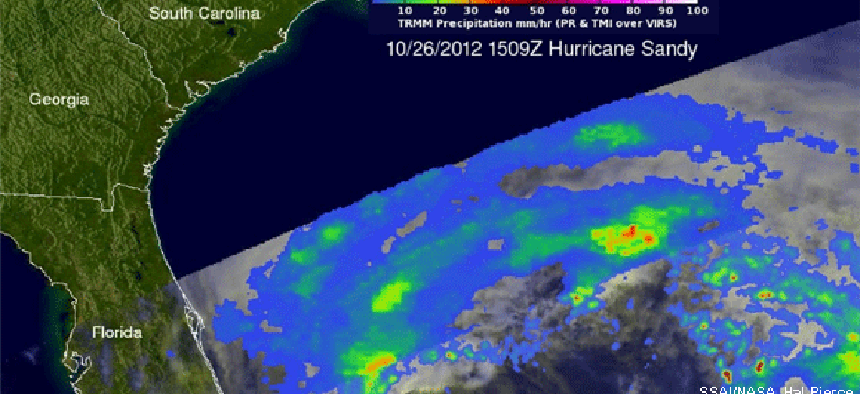Can the cloud withstand a 'perfect storm'?


Connecting state and local government leaders
It seems no place on the East Coast can avoid the wrath of Hurricane Sandy, but cloud services can weather the storm.
This article has been updated to clear up confusion, pointed out by a couple of readers, between Amazon's availability zones and regional centers.
Cloud computing providers such as Amazon Web Services are facing another test of reliability as Hurricane Sandy moves up the East Coast toward a date with two other significant weather systems. Weather forecasters are predicting a strong, wide, slow-moving storm that is likely to hit hard even in areas not in the storm’s direct path.
Even in areas that won’t see the worst of the storms (as of this writing, New England seems ticketed for the heaviest hit), a couple days of heavy rains and high winds are expected to take down trees and power lines, taking websites and Web services with them in some places. It’s nothing new — AWS, for example, lost power to its Northern Virginia data center during June’s derecho storm in in the Mid-Atlantic states, and with it service to some high-profile sites.
AWS, which claims 300 U.S. government agencies and 1,500 educational institutions as customers, has had other hiccups at its Northern Virginia center, including losing service in April 2011 to a remirroring problem, suffering a partial outage in June, and being hit with another outage earlier this week. Microsoft, another large cloud provider, has had a few problems of its own.
Outages happen. But can agencies that rely on cloud services do anything about it?
One way with AWS is to take advantage of Amazon’s multiple availability zones, distinct locations within a regional hub that are insulated from each other, or even to spread services across more than one of AWS’ eight geographic regions. So if service is lost in one zone or region it can be switched to another. Such services do come at a price, so for agencies, the question is whether the uptime is worth the extra money.
The Recovery Accountability and Transparency Board has such an agreement with AWS for its Recovery.gov site, which allowed it to avoid the April 2011 outage while other sites went down, sometimes for days.
Agencies also could use multiple cloud providers, available through cloud brokerages, which gives them more flexibility in the event one provider loses service. And they other options, including their own private clouds, hybrid clouds or a cloud service provided by another agency.
The string of outages over the past 18 months or so has brought some attention to cloud’s reliability, but it’s not likely to stop agencies from moving to the cloud. The latest storm is just one more example of why, as with any IT system, a backup plan is necessary.
NEXT STORY: 10 key technologies for 2013




